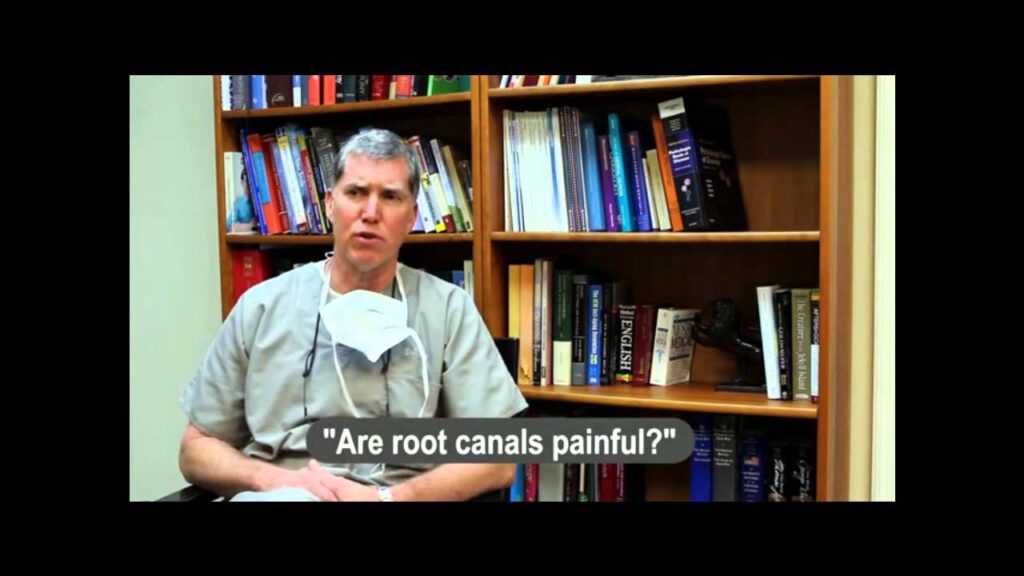Tampa Dentist Dr. Frederick A. Vance, D.D.S Your Guide to Stress Free Root Canal Procedures.
Introduction:
At the Enlow & Vance Dental Partners practice of Dr. Frederick A. Vance, D.D.S., we prioritize your oral health and Dental Fintess with state-of-the-art treatments designed to save your natural teeth and ensure your comfort throughout every procedure. Today, we’re diving deep into one of the most common yet misunderstood dental treatments: the root canal procedure.

Table of Contents:
– Introduction
– What Is a Root Canal?
– Signs You May Need a Root Canal
– Success Rate of Root Canals
– Are Root Canals Painful?
– How we address your Dental Fear & Anxiety
– Conclusion
What Is a Root Canal?
Understanding the Procedure:
A root canal is a dental procedure aimed at saving a tooth that might otherwise need to be extracted. This treatment becomes necessary when the tooth’s pulp, which is the innermost part of the tooth containing nerves and blood vessels, becomes infected or inflamed. “The process involves removing the damaged area of the tooth, cleaning and disinfecting it, and then filling and sealing it,” explains Dr. Vance, a seasoned Root Canal Dentist with over 200 Five Star Google Ratings in Tampa, Florida.
Signs You May Need a Root Canal
Recognizing the Symptoms:
“Patients are often alerted to the need for a root canal by their dentist,” says Dr. Vance. Symptoms might include discomfort or pain in the affected tooth. However, not all teeth requiring root canal therapy will cause pain, making it crucial for regular dental check-ups. X-rays and dental examinations can reveal if a tooth’s nerve is compromised, indicating the need for a root canal.
Web Resources:
Transcript of the above “Root Canal” video with bolded highlights.
A root canal is a treatment that we sometimes have to do if we want to save a tooth that we would otherwise have to extract because the inside of the tooth, or the pulp, has become infected. When a person gets a cavity, the cavity starts as just bacteria attacking the hard tissues of the tooth, the enamel structures. However, if that cavity is not dealt with before it gets very large, then that decay and the bacteria can spread until they get to the inside of the tooth. When that happens, the filling is no longer effective; it doesn’t work any longer. So, we have to actually go into the inside of the tooth, clean out the inside, and put a filling that goes all the way to the tip of the root.
The indications that a patient needs a root canal are usually given to them by the dentist. The reason for that is sometimes they seek care because of discomfort from a tooth that needs a root canal. Sometimes, a tooth that needs a root canal is not uncomfortable, but we can tell by X-rays and our examination of the tooth that the nerve is involved. When that is true, the only recourse to save a tooth is a root canal; otherwise, it has to be extracted.
Root canals are typically 84% successful across the United States. We find that our success rate is better than the norm, better than the average, and we’re probably in about the 92% success rate generally. You’ll hear of the horror stories of a root canal because the patient has allowed it to get to an acute situation where they have extreme infection. Under those circumstances, yes, they can sometimes be painful. We call those “hot teeth.” However, if we take the time to medicate patients prior to doing the root canal and bring them back, we can generally make most root canals painless.
For those patients that are apprehensive, we can sedate them. We have different levels of sedation, from oral sedation to IV sedation. IV would be the indication for those that are really fearful or concerned that they would have pain. We can alleviate that and assure people that they’re not going to experience pain. They can just simply be relaxed and, for all intents and purposes, not remember a thing.
